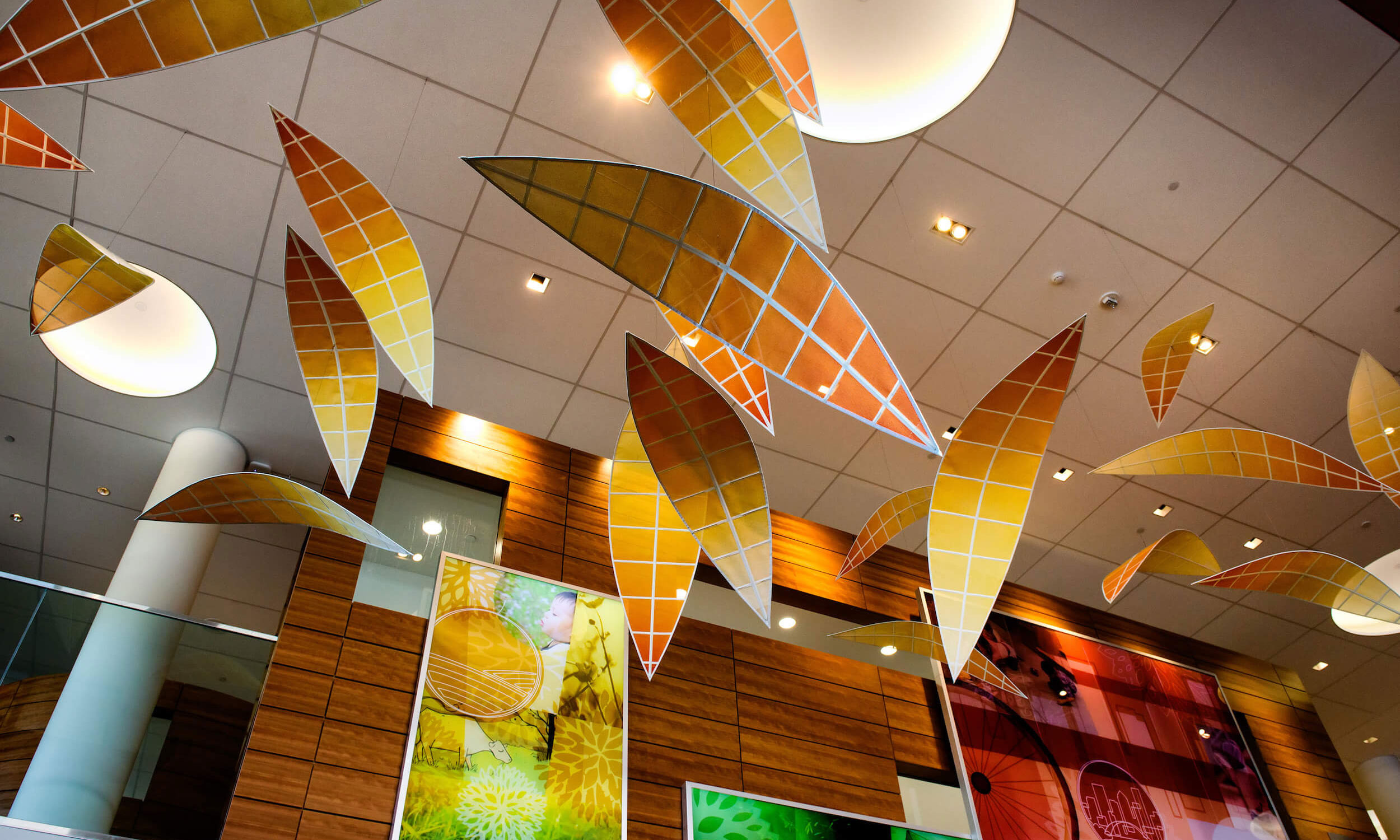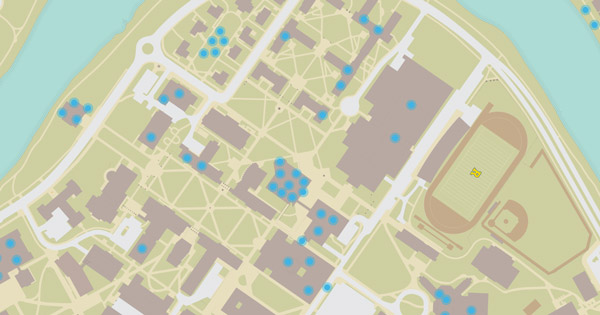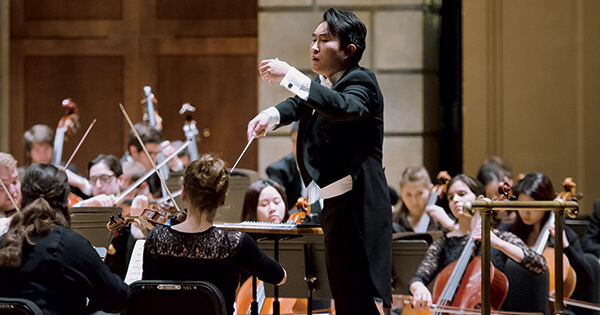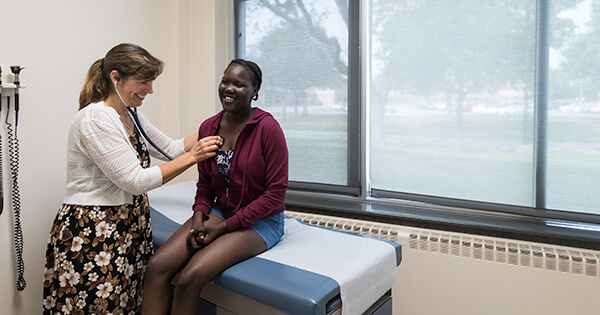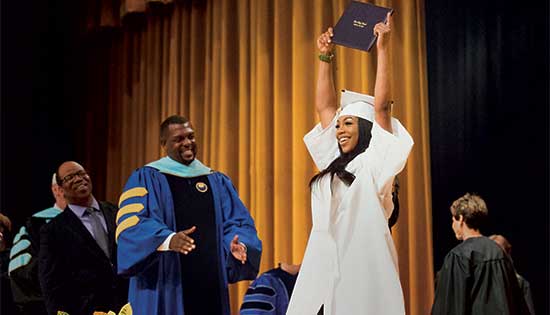5,000 years of writing prompts
Andrew Cappetta, assistant curator of academic programs at the University of Rochester’s Memorial Art Gallery, poses the question to the group of eight students seated in front of him. The students are enrolled in a composition course taught by Stella Wang ’00 (PhD), a lecturer in writing at the College. They are surrounded by portraits—some that seem familiar and traditional, others less so.
Without any background information, the students inspect the painting in question—American artist Kehinde Wiley’s After Memling’s Portrait of a Man with a Letter—and then share their observations.
The 2013 painting is based on a work by Northern Renaissance painter Hans Memling (1430–1494). Memling placed his subject—most likely a Flemish merchant—against a pastoral scene, while Wiley depicts a 21st-century African-American man in a similar pose and setting.
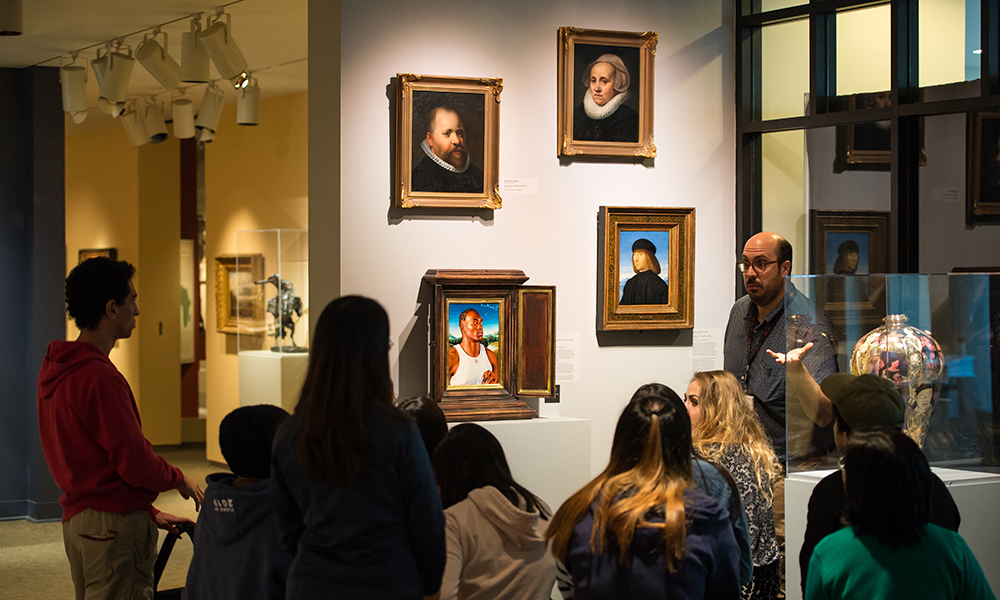
Andrew Capetta, Assistant Curator of Academic Programs, discusses Kehinde Wiley’s “After Memling’s Portrait of a Man with a Letter” with UR lecturer Stella Wang’s WSAP class during a visits to University of Rochester’s Memorial Art Gallery November 3, 2016. / / photo by J. Adam Fenster / University of Rochester
Marta Kontny ’17, a senior from Bytom, Poland, points out that you don’t typically see portraits of a black person posing in front of a pastoral backdrop, questioning the artist’s intent for doing so.
Sarah Pursell ’20, a freshman from Allentown, Pennsylvania, brings up the contrast between the white clothing worn by the subject in Wiley’s painting and the dark attire in many of the portraits from earlier centuries that surround the Wiley piece at the gallery.
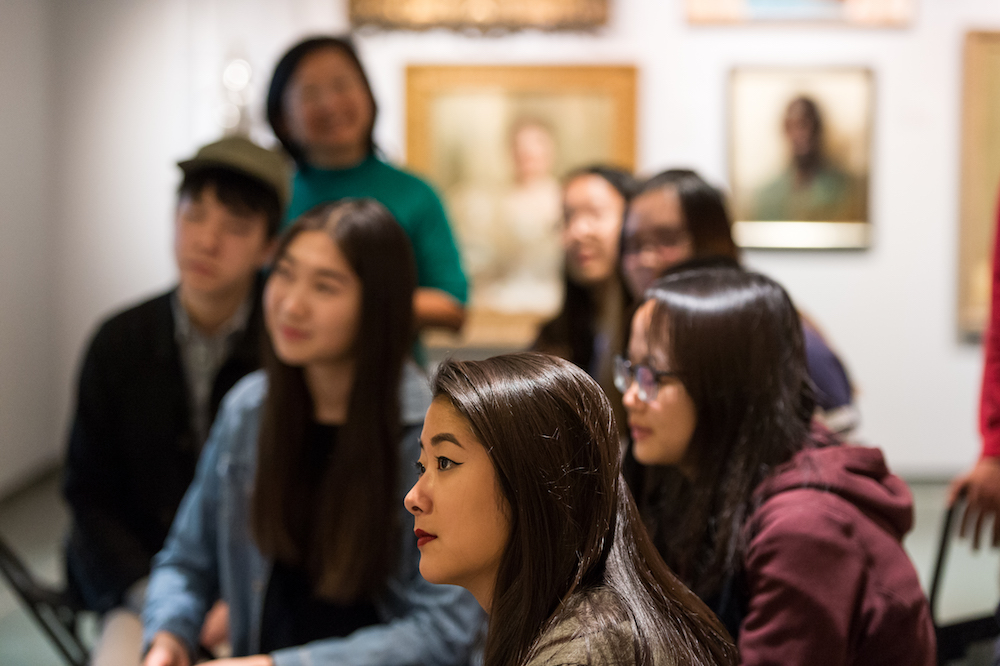
Sarah Oursell ’20 listens as Andrew Capetta, Assistant Curator of Academic Programs, discusses Kehinde Wiley’s “After Memling’s Portrait of a Man with a Letter” with UR lecturer Stella Wang’s WSAP class during a visits to University of Rochester’s Memorial Art Gallery November 3, 2016. / / photo by J. Adam Fenster / University of Rochester
Other students share different observations, and a discussion about the artist and the piece develops.
The exercise is part of a partnership between the College’s Writing, Speaking, and Argument Program and the art museum that started during the 2015–16 academic year. Deborah Rossen-Knill, associate professor and director of the program, worked with the museum to help establish the partnership.
“The Memorial Art Gallery and the Writing, Speaking, and Argument Program work together well because the critical viewer’s stance aligns with the critical research writer’s stance,” Rossen-Knill says. “The goal is to help students develop this critical stance across different contexts and ways of communicating.”
“Teaching with objects can be a great way to get students to think about something they haven’t thought about before,” says Marlene Hamann-Whitmore, the McPherson Director of Academic Programs at the museum, who helped launch the partnership. “We basically have 5,000 years of writing prompts.”
Wang is one of several instructors in the Writing, Speaking, and Argument Program who have taken advantage of the partnership. Cappetta notes that he works with instructors to customize the visit to their and their students’ needs. The pair chose to have her students focus on the Wiley portrait to open up a discussion of code-meshing—a writing strategy that Wang describes as “blending of languages, local varieties, or registers”—in a visual context.
According to Wang, writers and artists alike adopt code-meshing “to both work with and transcend the ‘norm’ for purposes of communication and argument.” Students apply what they’ve learned in one of their class assignments. In addition to a traditional research paper, students create a related project using code-meshing to reach an audience that would benefit from the findings.
Wang also sees benefits to the visit that go beyond any particular assignment. Talking about a piece of artwork “helps students think about the needs and expectations of the audience,” Wang says.
The collaboration is based loosely on the successful Art and Observation initiative, a longstanding partnership between the School of Medicine and Dentistry and the gallery that aims to help medical workers—physicians, nurses, hospital chaplains—provide better care to patients.
The Art and Observation initiative inspired wide-ranging efforts to expose students to the educational resources the museum provides. In November, Eastman School of Music freshmen enrolled in the Eastman Colloquium—a course on the sounds, meanings, and uses of music within a variety of contexts—explored the connections between music and visual art during a visit there. Art history, history, and English classes have also used the museum as a resource.
Hamann-Whitmore sees something special in engaging the freshmen who make up most of Wang’s class.
“They’re new to the University, they haven’t set their patterns to which part of the city they’re comfortable in,” she says. “They’re remaking themselves, which is what one gets to do when one goes to college. It’s a great time to show them that the Memorial Art Gallery is a really a pretty wonderful place.”
—Jen Roach, January 2017


